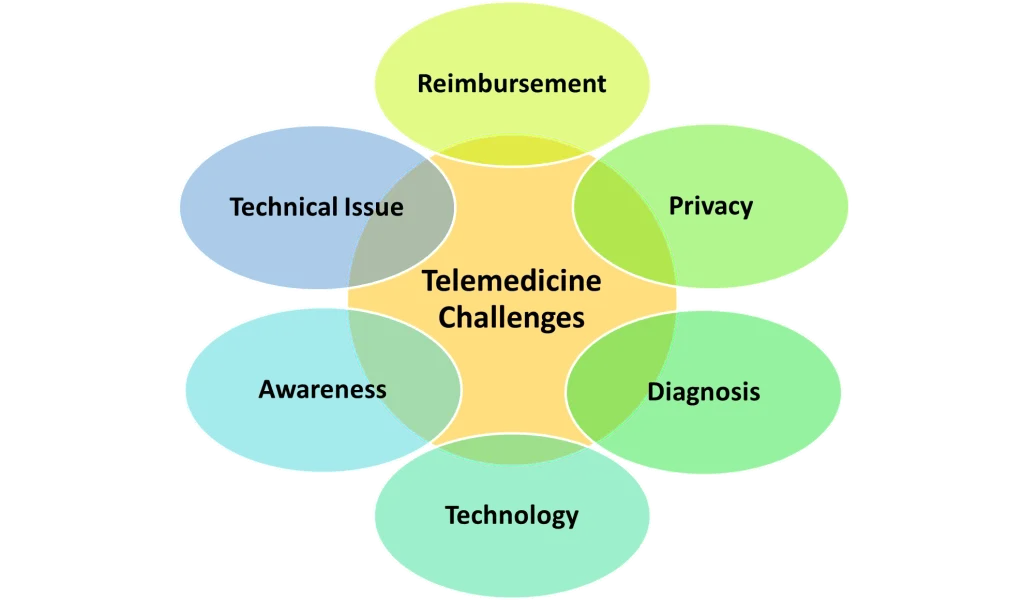Challenges in Telemedicine and Their Potential Solutions
Originally, telemedicine was established to cater to the healthcare needs of patients who were underserved due to their location, often in remote and rural areas where primary care was not easily accessible. Despite being available for several years, remote healthcare delivery faced sluggish growth and limited acceptance initially as patients preferred in-person consultations.
But the good news is that telemedicine is on the rise, and experts predict that the market will increase by 16.8 percent by 2023. With cost-efficient and easily accessible healthcare services, more than 50 percent of hospitals in the United States and almost 1 million Americans are already using this technology.
The recent developments have led to the swift integration of telehealth across all regions, including urban and rural areas due to the effectiveness of telemedicine in delivering quality care while minimizing physical contact during a public health emergency. Despite the many advantages of telemedicine, some obstacles continue to hinder its successful adoption and implementation by healthcare providers and organizations. However, developing a plan can help you overcome these concerns. Here are some common telemedicine concerns and effective strategies for addressing them.
REIMBURSEMENT
Physicians and healthcare providers may face challenges when seeking reimbursement for telemedicine services. The lack of uniform coverage and reimbursement policies across state lines is a primary obstacle to the development of telemedicine. The Centers for Medicare & Medicaid Services (CMS) have certain requirements and limitations that make it difficult for healthcare providers to receive reimbursement for telehealth services. In addition to these limitations, private insurance companies may not always cover telemedicine services.
Solution:
Many states are taking steps to address these challenges by passing laws that expand telemedicine coverage and reimbursement. The CMS has also proposed extending coverage to include prolonged preventative services and virtual check-ins in 2019 and beyond. Implementing a reimbursement plan that incorporates technology for tracking expenses and reimbursement claims can be helpful to overcome obstacles in reimbursement. Utilizing a platform to keep track of expenses and maintain up-to-date information on insurers’ allowable reimbursements can aid in properly documenting receipts required by payers.
PRIVACY
Although telemedicine services offer convenience, they can also pose security and privacy risks as patient data is transmitted over the Internet. The healthcare industry has always been vulnerable to data breaches due to the collection and transmitting of sensitive data. The use of electronic health records (EHRs) and other electronic forms of protected health information (PHI) in telemedicine poses an even greater risk of data-related incidents.
Solution:
To ensure compliance with HIPAA’s privacy and security regulations, encryption of all information gathered through telemedicine services is mandatory. Healthcare providers and organizations must invest in telemedicine solutions with robust security, interoperability, and encryption protocols that comply with HIPAA Privacy and Security rules to avoid data breaches. It is essential to ensure that all network connections used for contacting patients are secure. Obtaining patient consent prior to recording and storing video calls should be necessary.
DIAGNOSIS
Diagnosing certain conditions remotely may be a challenge in telemedicine. Without the ability to conduct a physical examination, healthcare providers may struggle to accurately diagnose certain conditions or may need to refer patients to an in-person visit for a more thorough examination.
Solution:
To address this diagnosis issue, healthcare providers can use remote monitoring devices to collect data on a patient’s vital signs and symptoms. Additionally, healthcare providers can use high-quality video conferencing equipment to get a better view of a patient’s condition and provide more accurate diagnoses.

TECHNOLOGY
Telemedicine is hampered by the lack of access to technology, especially in rural or low-income areas. Patients who do not have access to a computer, smartphone, or high-speed internet may be unable to participate in telemedicine visits, which limits their access to healthcare. Additionally, older adults who may not be as comfortable with technology may also struggle to use telemedicine platforms.
Solution:
To address this challenge, healthcare providers can explore alternative ways to provide telemedicine services. For example, telephone consultations can be an option for patients who do not have access to a computer or smartphone. Additionally, healthcare providers can partner with community organizations to provide patients with access to technology and internet services.
AWARENESS
Telemedicine services won’t be utilized if patients are unaware of them. It is a lost chance if your patients are not aware of the telemedicine services you provide, particularly as around 96 percent of major employers intend to offer telemedicine services to their workers.
Solution:
Therefore, it is important to design a launch strategy utilizing content marketing and social media to spread the word. You may use email newsletters, social media platforms, and your blog if your practice has one, to notify your patients of your telemedicine services.
TECHNICAL ISSUE
In the event of a glitch or internet issue, physicians may struggle to understand patients during a telemedicine consultation, potentially leading to misdiagnosis. Missed diagnoses can harm both patients and healthcare providers, leading to inappropriate prescriptions and increased costs. Also, these issues can disrupt telemedicine visits and prevent patients from receiving the care they need.
Solution:
To overcome this complex issue, a simple solution is to double-check. If there is uncertainty about what a patient is saying due to poor internet connectivity, it’s best to ask for clarification. Additionally, utilizing the live chat feature on video conferencing apps can help improve communication accuracy.
Healthcare providers can provide patients with detailed instructions on how to use the telemedicine platform and troubleshoot common technical issues. Also, healthcare providers can have backup plans in place, such as offering phone consultations, to ensure that patients can receive care even if technical issues arise.


